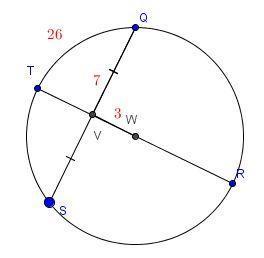
Mathematics, 04.12.2019 03:31, cloey6544
This is an exercise around linearization of a scalar system. the scalar nonlinear differential equation we have is r(t)= sin(x(t)) + u(t). (a) the first thing we want to do is find equilibria (dc operating points) that this system can support. suppose we want to investigate potential expansion points (x",u") with u. = 0. sketch sin(x*) for 4π x< 4π and intersect it with the horizontal line at 0 this will show us the equilibria points. where sin(x0. (b) show that all r(r) = satisfy (7) together with u" = 0. let us zoom in on two choices: π and representative points.) = o. (looking at the sketch we made, these seem like (c) linearize the systern (7) around the equilibrium (x0,u") = (0,0). what is the resulting linearized scalar differential equation for (t)-x-x(t)-0, involving udr) = u(r) _ u" = u(t) 0? (d) for the linearized approximate system model that you found in the previous part, what happens if we try to discretize time to intervals of duration δ? assume now we use a piecewise constant control input over duration δ, that δ is small relative to the ranges of controls applied, and that we sample the state x every δ (that is, at every 1 na where n is an integer) as well write out the resulting scalar discrete-time control system model. this model is an approximation of what will happen if we actually applied a piecewise constant control input to the original nonlinear differential equation. (e) is the (approximate) discrete-time system you found in the previous part stable or unstable? (f) now linearize the system (7) around the equilibrium (x, u") ( π.0), what is the resulting approximate scalar differential equation ) 0? (g) for the linearized system model that you found in the previous part, what happens if we try to discretize time to intervals of duration δ? assume now we use a piecewise constant control input over duration that δ is small relative to the ranges of controls applied, and that we sample the state x every δ (that is, at every , = na, where n is an integer) as well, write out the resulting scalar discrete-time control system. this model is an approximation of what will happen if we actually applied a piecewise constant control input to the original nonlinear differential equation. (h) is the (approximate) discrete-time system you found in the previous part stable or unstable? (i) suppose for the two discrete-time systems above, we chose to apply a feedback law u(r) =-k(x(1) x"). for what range of k values, would the resulting linearized discrete-time systems be stable? your answer will depend on δ.

Answers: 1
Other questions on the subject: Mathematics

Mathematics, 21.06.2019 16:40, Alex9089435028
The sum of two numbers is 86, and their difference is 20. find the two numbers
Answers: 2

Mathematics, 21.06.2019 19:40, friendsalwaysbae
Given the sequence 7, 14, 28, 56, which expression shown would give the tenth term? a. 7^10 b. 7·2^10 c. 7·2^9
Answers: 1


Mathematics, 21.06.2019 20:20, leximae2186
Consider the following estimates from the early 2010s of shares of income to each group. country poorest 40% next 30% richest 30% bolivia 10 25 65 chile 10 20 70 uruguay 20 30 50 1.) using the 4-point curved line drawing tool, plot the lorenz curve for bolivia. properly label your curve. 2.) using the 4-point curved line drawing tool, plot the lorenz curve for uruguay. properly label your curve.
Answers: 2
Do you know the correct answer?
This is an exercise around linearization of a scalar system. the scalar nonlinear differential equat...
Questions in other subjects:

Chemistry, 17.10.2019 05:30



History, 17.10.2019 05:30


Chemistry, 17.10.2019 05:30



Social Studies, 17.10.2019 05:30

Mathematics, 17.10.2019 05:30







